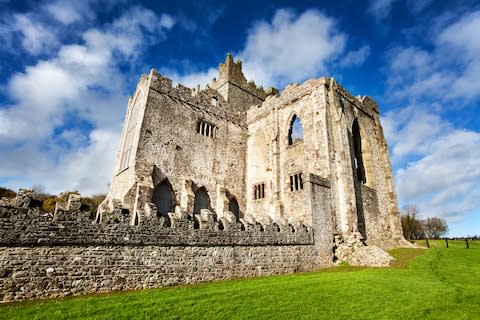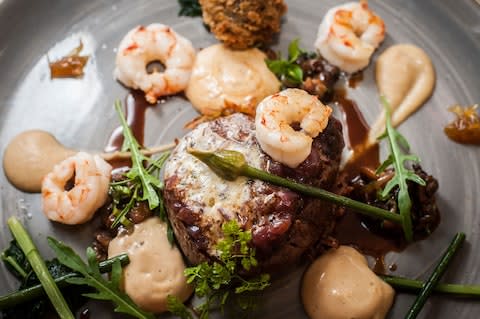The Irish seaside town with a closely guarded secret

Since the early 9th century when the Vikings first set foot on these shores, Wexford has grown accustomed to invasion. In the summer months, this small yet pretty harbour town is mostly overrun by hordes of Dubliners flocking to the ‘sunny south east’ for a weekend getaway.
The nearby Blue Flag beaches, secluded coves with cerulean tides and small coastal villages landing some of Ireland’s best seafood make the town the undisputed gateway to the Irish Riviera.
But come autumn, thousands of visitors flock from around the globe for the town’s most closely guarded secret – one that it has largely managed to keep under wraps for the best part of 70 years – the Wexford Festival Opera. Billed as the world’s best small festival, it is housed each year in Ireland’s first purpose-built opera house (opened in 2009 at the cost of €33 million).
The festival was first started by local doctor Tom Walsh and the Wexford Opera Study Circle back in 1951. Since then, it has cultivated a formidable reputation for its audacious annual programme, attracting some of the world’s best operatic talent. The Festival’s aim is simple – to breathe new life into forgotten works and give recognition to obscure masterpieces.
This year’s programme is no exception. The main event will see performances of two operas which fell out of favour with audiences: L’oracolo by Franco Leoni (first performed in 1905) and Umberto Giordano’s Mala vita, as well as the European premiere of Dinner at Eight by the American composer William Bolcom, based on the 1932 play of the same name.

Eating and drinking
You can always tell when the festival’s in town because the restaurants and pubs are abuzz. Given its location on the mudflats of the Slaney estuary, Wexford cuisine is undoubtedly all about seafood. Having earned his stripes at Dublin’s Michelin-starred L’Ecrivain, Wexford native Paul Hynes has made waves with his quayside restaurant La Côte (lacote.ie) which opened in 2014. Since then, it has garnered widespread praise for its sensational dishes inspired by the freshest local catches.
While Wexfordians have a reputation for their retiring nature, you wouldn’t know it from the town’s lively pub culture. Of Wexford’s many traditional watering holes, the Sky & the Ground on South Main Street is perhaps one of the most popular, with a number of craft beers on tap and live music most nights.

Off the map
Wexford has played a significant role in charting the course of Irish history. The town was the staging point of both Viking and Norman invasions, and felt the wrath of Oliver Cromwell’s army in the 17th century.
While the town itself has lost many of the vestiges of its turbulent history, the eponymous county that surrounds it has long borne the scars of conflict. A drive out to the Hook peninsula, a rocky promontory that juts out in the often wild St George’s Channel, offers a look into the past.

Ruins abound on this tapering coastline, including the atmospheric 13th century Tintern Abbey (not to be confused with the Welsh ruin with the same name) and 15th century Ballyhack Castle. The main attraction however is the Hook Head. At its tip stands the world’s oldest working lighthouse. This squat, black-and-white-striped structure has watched over the stormy-cast rocks for more than eight centuries. Also nearby is Loftus Hall (loftushall.ie), a 19th-century mansion house said to be haunted by the devil.
One of Ireland’s most unsung coastal drives is the meandering R742. Take a right turn off anywhere along the route and you’ll soon find yourself on one of County Wexford’s Blue Flag beaches, including sweeping sandy stretches like Curracloe, where Steven Spielberg filmed the opening montage of Saving Private Ryan.

Many a US president, including Barack Obama, can trace their heritage back to Ireland and Wexford’s connection with John F Kennedy is particularly venerated. In 1963, just months before his assassination, JFK returned to his ancestral home for a cup of tea at the Kennedy Homestead (kennedyhomestead.ie) in Dunganstown, which is now open to visitors and recently celebrated the centennial of his birth.
The Wexford Festival Opera (wexfordopera.com) runs from Friday October 19 to Sunday November 4.
Getting there
Aer Lingus (aerlingus.com) and Ryanair (ryanair.com) serve Dublin Airport from cities around the UK. British Airways (ba.com) also operates daily flights from London Heathrow and London City.
Staying there
During the Festival, many hotels in the town offer special packages. The Ferrycarrig Hotel has midweek and closing night Opera Packages (ferrycarrighotel.ie; from €220 per person sharing, including breakfast, dinner and a shuttle service to the Opera House).
Clayton Whites Hotel, a few minutes’ walk from the National Opera House, is also offering a midweek/closing night Festival Feast Package (claytonwhiteshotel.com; from €219 per person sharing, including dinner).

